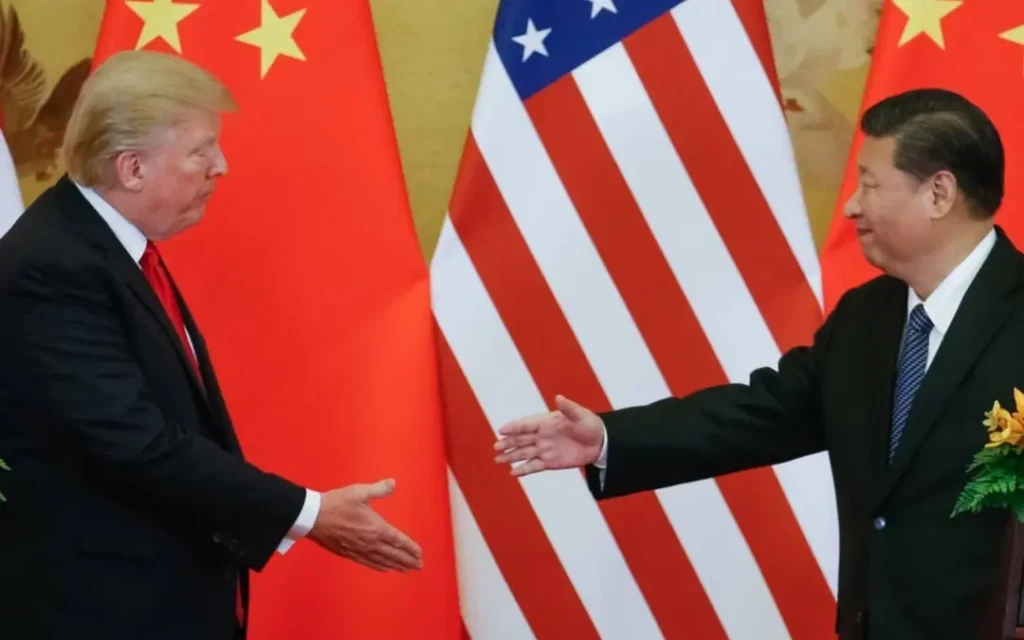Trump Calls Xi “Extremely Hard to Deal With” as China Trade Tariffs Escalate: Former U.S. President Donald Trump has again raised tensions in global trade. On Wednesday, June 4, 2025, he called Chinese leader Xi Jinping “extremely hard to make a deal with.” This came just as the European Union claimed progress in its talks with the U.S.
Trump’s comments following his decision to double tariffs on global metal imports. These moves come ahead of a potential call between Trump and Xi. The world now watches again as two economic giants clash over trade terms.
Also Read | China Rare Earth Export Ban Disrupts European Auto Supply Chains
Trump Calls Xi “Extremely Hard to Deal With” as China Trade Tariffs Escalate: Insights
- Trump-China trade tariffs were doubled from 25% to 50% on steel and aluminum.
- China responded with a 125% levy on U.S. goods.
- Trump hinted at talks with Xi but said a deal is “tough.”
- The EU reported progress in its trade negotiations with the U.S.
- Canada, the UK, and Mexico pushed back against the tariffs.
- OECD lowered global growth forecasts due to rising trade tensions.
- Legal challenges to some tariffs are still pending in appeals.
- The U.S. asked for new trade proposals before a July 9 deadline.
Background
Tensions between the U.S. and China over trade have existed for years. During Trump’s presidency, the U.S. imposed heavy tariffs on Chinese goods. These sparked retaliation from China, leading to a prolonged trade war. Both sides tried to reach deals in the past, but deep issues remained.
The conflict has also affected other countries and global markets. With new tariffs now back in the spotlight, previous negotiations seem fragile. Trump’s renewed pressure shows little interest in backing down. International leaders are again worried about the fallout from Trump-China trade tariffs.

Top 10 Countries Supplying Steel and Aluminum to the U.S. – Breakdown of Import Origins by Volume (2024).
Photo Credits: AFP, loana PLESEA, Herve BOUILLY, Jonathan WALTER.
Main Event
On Wednesday, June 4, 2025, Trump posted on his Truth Social platform that President Xi is “tough to make a deal with.” This statement followed news that the U.S. had doubled tariffs on steel and aluminum imports from 25% to 50%, reigniting fears of a global trade war.
These Trump-China trade tariffs directly targeted Chinese goods. In response, China raised its tariffs on U.S. imports to 125%. The tone seems increasingly hostile despite plans for a possible phone call between Trump and Xi.
Aster, the OECD ministers met in Paris to discuss the global, Trump’s decision economy. The OECD blamed the U.S. tariff hikes for slowing global growth. EU Trade Commissioner Maros Sefcovic met with U.S. Trade Representative Jamieson Greer and noted that talks were “constructive.” However, he warned that progress is at risk if tariffs continue rising.
Canada, the UK, and Mexico reacted swiftly. Canada labeled the tariffs “unjustified.” Mexico’s economy minister said it was unfair since the U.S. exports more steel to Mexico than it imports. The UK secured a partial exemption, keeping tariffs at 25%.
While Trump’s team pushes for deals before a July 9 deadline, his aggressive tone may delay progress. Still, the administration remains firm on enforcing the Trump-China trade tariffs.
EPA Images

U.S. Treasury Secretary Scott Bessent stated that he believes a phone call between President Donald Trump and Chinese President Xi Jinping could happen at some point in the future.
Photo Credits: EPA Images.
Implications
The Trump-China trade tariffs are shaking global markets. Businesses worry about rising costs, and governments fear more trade barriers. The EU is working to avoid further damage by staying in talks. Canada and Mexico push for fairness, highlighting their trade ties with the U.S.
The OECD has already cut its global growth forecast. U.S. companies that rely on steel and aluminum imports could face higher prices. If product costs rise, consumers may also feel the effects. Legal fights around the tariffs are still underway, but no relief seems near.
Conclusion
As the July 9 deadline approaches, global trade partners are under pressure to negotiate. Trump’s stance on Xi and the rising Trump-China trade tariffs shows that tensions are unlikely to ease soon. Experts warn that delays in talks could harm economies worldwide.
Still, some hope remains if discussions continue behind the scenes. All eyes are now on the next move from both Washington and Beijing.



